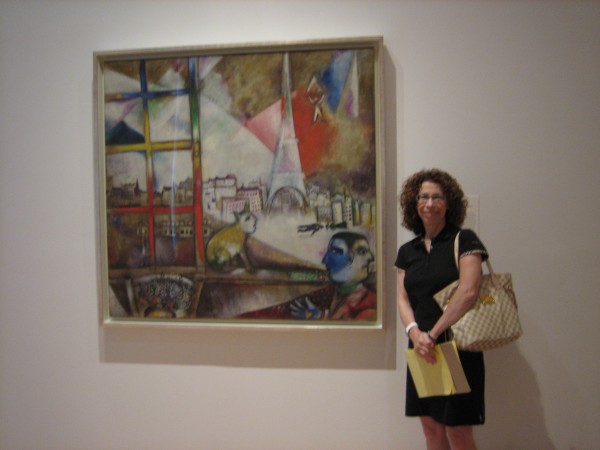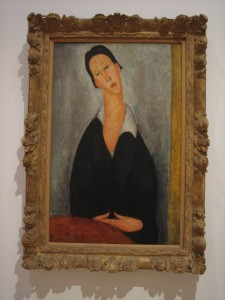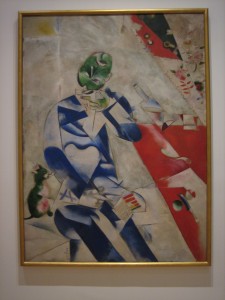Paris Through the Window:
Marc Chagall and His Circle


Amadeo Modigliani, "Portrait of a Polish Woman," 1919. Oil on canvas, 39 1/2 x 25 1/2 in. Philadelphia Museum of Art
The Philadelphia Museum of Art, the great neo-classical temple on the banks of the Schuylkill River, recently paid homage to the early modernist painter Marc Chagall and several of his contemporaries. The exhibition, which ran from March 1, 2011 – July 10, 2011, included over seventy works from an array of artists whom Chagall befriended in Paris during the early years of the twentieth century. Chagall and his fellow artists were drawn to Paris not only for its cafes and galleries but also, for its vibrant avant-garde culture.
Chagall moved to Paris from his native Russia in 1911 at the age of 24 and quickly became part of a burgeoning group of émigré artists. Living and working in Paris’s Montparnasse neighborhood, Chagall thrived as a painter. Included in this exhibition were several works he produced during the four years he lived in the famous artist complex, La Ruche (beehive.) The building’s name stems from its unique beehive shape and the honeycomb of artists studios within.
Chagall’s painting, Paris Through the Window (1913, Oil on Canvas), which lends its title to the exhibit, immediately caught this visitor’s eye. The work depicts Chagall’s view from his La Ruche studio window. And what it view it was. At 53 ½” x 55 3/4” this sizable painting displays both Chagall’s birds eye view of the city of light and a vivid imagination. Its colorful canvas is chockfull of recognizable imagery (the Paris skyline, the Eiffel Tower, a cat perched on the windowsill, flowers on a chair) and biographical symbolism. In the lower right hand corner of the foreground, Chagall painted himself as a Janus-faced man. One side of the face looks east back to his life in Russia, while the other side of the face looks west. The view to the west reflects new influences on Chagall including cubism, the modern painter Robert Delaunay, and his friend the poet Apollinaire.
Museum curator Michael Taylor speculated about the meaning of the yellow heart painted on Chagall’s blue hand suggesting, “I think it’s a symbol of Chagall as a lover, as someone who wears his art on his sleeve.” Chagall also appears to have enjoyed inserting mystery figures in this canvas. To the right of the Eiffel Tower a man appears floating in air from a triangular shaped parachute, mirroring the shape of the Tower itself. Beneath the skyline a couple floats horizontally in the clouds, both clad in dark clothing, the man with a cane and the woman with a modest ankle length skirt. Could they be a reference to people he knew from his native Vitebsk shtetl?
Chagall’s paintings, and the others in this exhibit, provided a wonderful and unique view of Paris from a bohemian yet cosmopolitan life. The other artists from Chagall’s circle whose work also appeared in this exhibit included Robert Delaunay, Jacques Lipchitz, Louis Marcoussis, Jean Metzinger, Amedeo Modigliani, Chana Orloff, Jules Pascin, Chaim Soutine and Ossip Zadkine.
Paris Through the Window: Marc Chagall and His Circle was presented in the Ruth and Raymond G. Perleman Building located across the street from the main museum. Built in 1927 as an office building, the building’s design was considered the height of contemporary sophistication. The restored structure blends sleek modern lines with gorgeous Art Deco elements.



